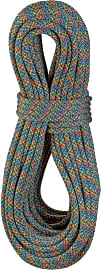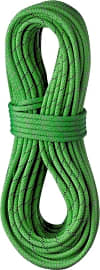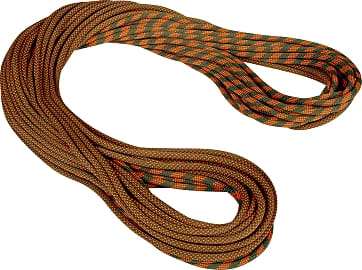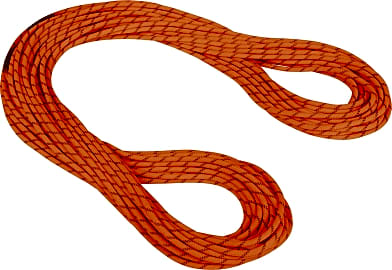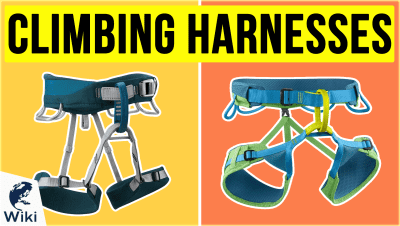The 10 Best Rock Climbing Ropes

This wiki has been updated 37 times since it was first published in March of 2017. Whether you're a novice or a seasoned professional, having reliable safety gear for your next rock climbing expedition is a necessity. We've included those designed for use in several different environments, allowing you to find the one that best fits your needs. All of these dynamic choices are suitable for lead climbing and vary in width, chemical treatment, and bi-color patterning. When users buy our independently chosen editorial picks, we may earn commissions to help fund the Wiki.
Editor's Notes
May 15, 2020:
Unless you're an adrenaline-seeking free climber, you'll need some sort of reliable safety equipment before scaling an outdoor route or indoor climbing wall. Those one a strict budget should consider X Xben Dynamic, which isn't the most flexible option, and therefore requires extra attention paid to backup and stopper knots, but it is one of the most affordable options on the market. Sterling VR9 is another, similar option, though it is a bit more supple. As many climbers will attest to, though, it's hard to beat many of Mammut's offerings, and the Mammut Infinity Classic has about as good of a price-to-performance ratio as anything out there. Mammut Crag promises to be even more durable and long-lasting, though it comes at a relatively high cost and is somewhat heavy. Edelrid Eco Boa is a reliable mid-range option that's suitable for beginner and intermediate climbers, while Edelrid Tommy Caldwell is a premium top-rope option that experienced users will appreciate. The same can be said of the Beal Opera Golden.
Speaking of experienced climbers, they'll often be well aware of Petzl, and Petzl Volta is an all-around high-performing rope that's slim enough to work with some of their most advanced climbing hardware. And when it comes to slim, nothing beats the Mammut Alpine and Black Diamond Dry, but that's because these are not intended for use in single-rope climbing. They're meant specifically for twin and double roping, which each have their advantages and disadvantages when it comes to varying terrains, climates, and weather conditions.
Special Honors
Petzl Outdoors Equipment This well-known company produces a wide range of adventuring gear, and their climbing equipment is some of the most popular on the planet. If you're thinking about going high-tech, make sure to check out their website first in order to make sure that all of your various pieces of gear are compatible with their high-end systems. petzl.com
Mammut Swiss You don't have to spend a fortune on a reliable, life-saving rope, and if you venture over to this fine manufacturer's website, you'll find a wide selection of specialty ropes that you might not be able to get your hands on anywhere else. They're especially well known for their extremely effective weatherproofing treatments. mammut.com
Maxim Ropes Here you'll find ropes, and almost nothing but. They have cords, lines, static ropes, and dynamic ropes for nearly any application, including not only recreational use but also professional and rescue-oriented purposes. They can be somewhat pricey, but there's no question when it comes to their quality. maximropes.com
Rock Climbing Rope: A Brief Introduction
Dozens of professions rely on climbing rope as a safety measure or practical tool, from wilderness rescue personnel to construction workers.
In 2017, rock climbing legend and veritable human gecko Alex Honnold shocked the world of extreme sports when he became the first to free-solo El Capitan, one of Yosemite National Park's most iconic big walls. Free-soloing, as the name implies, involves scaling a route alone, without the aid of typical safety gear. Chief among that gear is the climbing rope, which the 32-year-old Honnold also daringly forsook during his 4-hour crawl up the 3,000-foot granite face.
Now, before you go getting any ideas, remember: you're no Alex Honnold. Free-soloing is a method of climbing that requires extreme skill, physical fitness, and practice, usually in amounts that far surpass the capabilities of casual weekend hobbyists. Even Honnold, whose climbing career includes dozens of other free-solo accomplishments, took great pains to make sure he knew how to scale his record-breaking route with a rope before he ever attempted it without one.
Indeed, for the rest of us, a good length of climbing rope is a necessity. It's as essential a piece of equipment to the sport of rock climbing as helmets and protective padding are to football, serving as an important safety precaution and allowing participants to practice without threat of serious injury. In terms of technology, it's also come a long way since the first alpinist lashed cord to their waist, evolving from a basic design of braided natural fibers to sheathed lengths of high-end, synthetic materials. Today, the huge variety of options out there means that choosing the right rope can be as important as choosing one at all.
Of course, it's not just for sport, either. Dozens of professions rely on climbing rope as a safety measure or practical tool, from wilderness rescue personnel to construction workers.
The Right Rope For The Job
It's easy to look at a length of rock climbing rope and see little more than, well, rope. But the truth is that its modern incarnation is actually a complex piece of equipment, being specifically tailored to the task of moving up, down, and around rock in all its formations.
The most significant feature of today's rope is probably its kernmantle construction, a design first introduced by the German company Edelrid in 1953. The core, or kern, consists of long twisted fibres and constitutes most of the rope's tensile strength, while the outer sheath, or mantle, is made of woven colored fibres that protect the core and offer better handling. Together, those components made for a more durable and ultimately less breakable product than the plain nylon or hemp rope of the time.
Nearly all climbing ropes on the market today will feature kernmantle construction, but they'll also fall in one of two distinct categories: dynamic and static.
Nearly all climbing ropes on the market today will feature kernmantle construction, but they'll also fall in one of two distinct categories: dynamic and static. The former are designed to stretch when pulled, thereby helping to absorb the impact felt by a climber during a fall. The latter, by contrast, are meant to stretch very little, making them ideal for activities like hauling equipment or abseiling. Most climbing applications, however — including lead climbing and top roping — call for a dynamic line.
Dynamic rope also has its own sub-categories: single, half, and twin line. Single ropes are by far the most common and are designed to be used alone, rather than in conjunction with another line. They come in a wide variety of shapes and sizes and tend to be easier to manipulate than other types, making them versatile enough for use across a range of climbing disciplines. Half ropes, on the other hand, are used in tandem, providing redundancy and reducing drag by running parallel between wall anchors. That makes them ideal for multi-pitch climbing or mountaineering, but also means they take a bit more skill to manage. Similarly, twin ropes come in a pair, though they're meant to be clipped directly alongside one another. This also provides some redundancy in case either line is damaged, but at the same time increases drag.
There are other factors to consider within these categories, too. Dynamic ropes usually range from 30 to 80 meters in length, with 60 meters being the standard for most applications. They also range in diameter from 9.4 to 10mm and above, with anything in the 9.5-9.9mm area being suitable for all-around use. How long or thick your rope needs to be depends largely on where and how you're climbing — just remember that half its length should be equal to or greater than the whole length of your intended route.
A Few Safety Tips
As previously noted, free-soloing is a particularly dangerous sport, requiring a high degree of skill and practice. The same, however, can be said of rock climbing as a whole — few other hobbies, after all, call for practitioners to place themselves high on precarious rock faces, with naught but a length of rope to keep them from plummeting to the bottom.
Thus, it's important to take the right safety precautions before undertaking your first climb.
Thus, it's important to take the right safety precautions before undertaking your first climb. Knowing the basics of belaying and top roping with a partner is essential — that includes a working knowledge of the most commonly used knots, such as the rewoven figure 8 and the bowline, as well as a thorough understanding of your gear, including the harness and belay device. Most indoor gyms, in fact, will require you pass a test before being allowed to belay your buddy.
Ensuring your gear is up to snuff is also important. That means checking it regularly for any damage or wear, and replacing it when it gets old. All equipment should carry GUIANA or CE certification tags, as those are the two main organizations that set climbing standards and oversee testing. Certified climbing rope should feature detailed test results on its packaging, including metrics like fall rating, impact force, and static and dynamic elongation.



